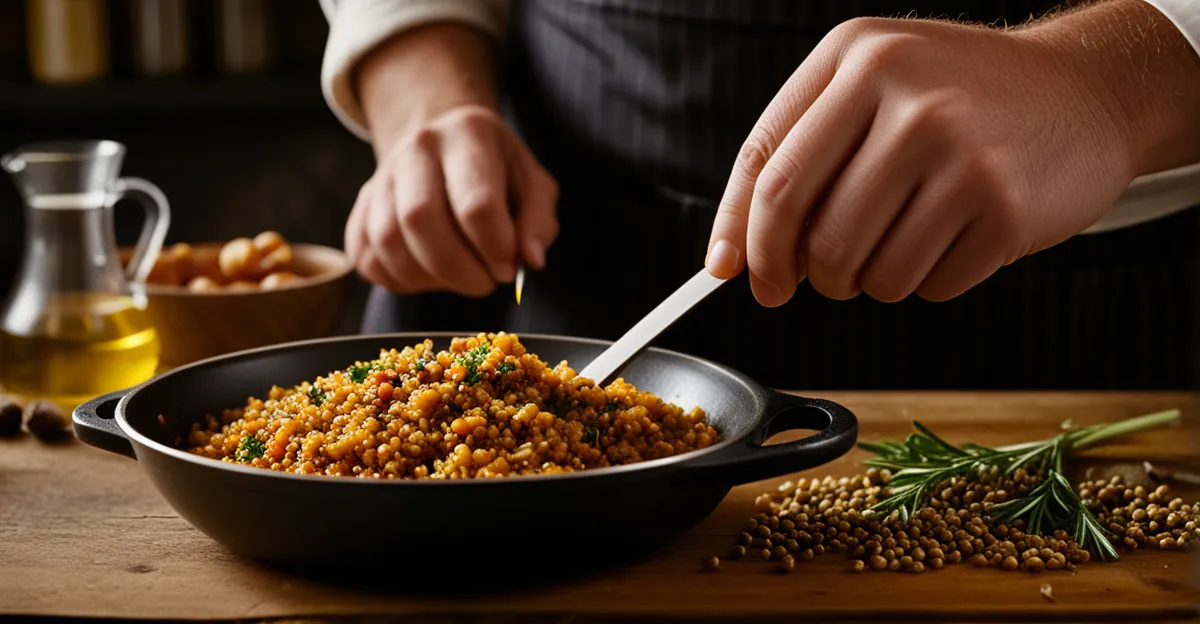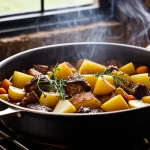Most Unusual Ingredients in Traditional UK Cooking: A Quick Overview
Unusual British ingredients have long shaped traditional British cuisine, providing unique flavors and textures that stand out in historic recipes. Some of the most unconventional ingredients include offal, such as kidneys and liver, eel, laverbread, and samphire. These rare British ingredients are deeply embedded in regional food culture, reflecting the resourcefulness and local availability of resources.
In coastal communities, for example, laverbread—made from edible seaweed—was a staple. Inland, offal was prized for its nutritional value and used in hearty dishes like haggis. These unique UK foods often arose from necessity, making the most of every part of an animal or plant, which today may seem unusual but held great significance historically.
Have you seen this : What are the steps to prepare a hearty Lancashire hotpot?
Perceptions of these ingredients have evolved substantially. Once considered everyday fare, many unusual British ingredients fell out of favour during times of increased industrialization and globalization. However, there’s a growing appreciation today for traditional British ingredients in culinary circles, viewing them as important cultural heritage, sometimes even celebrated for their bold flavors and distinctiveness. This shift highlights a renewed interest in exploring and preserving traditional British cuisine elements least expected in modern cooking.
Iconic Unusual Ingredients and Their Origins
Unusual British ingredients like eel, offal, laverbread, and samphire have deep roots in British culinary history. Each ingredient reflects a distinct part of the country’s landscape and tradition. Eel, for instance, was once abundant in London’s River Thames and a staple in working-class diets. Offal—comprising kidneys, liver, and heart—has long been prized across the UK for its affordability and nutritional value, often featured in traditional British cuisine especially in Scotland and northern England.
This might interest you : What Are the Steps to Crafting a Traditional Cornish Pasty?
Laverbread, a unique UK food made from boiled and pureed seaweed, originates from coastal Wales, where it has been consumed for centuries. Samphire, sometimes called “sea asparagus,” grows along British shores and adds a salty crunch to dishes, connecting food traditions to the maritime environment.
Historically, these rare British food ingredients were valued for their availability and ability to sustain communities. Over time, their usage shifted from common fare to niche specialties, as industrialisation changed diets and ingredient access. Yet, their legacy remains significant, showcasing regional identities and historic UK ingredients that continue to inspire both chefs and food historians today.
Culinary Uses and Traditional Dishes Featuring Unusual Ingredients
Traditional British cuisine often showcases unusual British ingredients in distinctive ways that highlight their unique qualities. These ingredients find a place in many British recipes with unusual ingredients that remain tied to cultural heritage. For example, jellied eels—a dish made from chopped eels boiled and set in a spiced gelatin—originated in East London and reflects marine influences in historic UK food. Another classic is haggis, a savory pudding containing sheep’s offal mixed with suet, onions, and oats, deeply rooted in Scottish traditional UK dishes.
Laverbread, unique to Wales, is made by boiling and pounding seaweed—a true example of transforming coastal resources into cherished fare. Similarly, stargazy pie, featuring fish heads peeking through the crust, comes from Cornwall and symbolizes local maritime traditions.
These dishes are more than nourishment; they tell stories of community survival and regional identity. The cultural importance of these foods lies not just in their flavours, but their role in sustaining local economies and preserving British food traditions across generations. Despite being unusual, these ingredients celebrate the diversity and history embedded in Britain’s culinary landscape.
Ingredient Profiles: Taste, Texture, and Appeal
Unusual British ingredients each offer a distinct taste and texture that contribute to their unique appeal. For example, eel possesses a rich, oily flavour with a firm yet tender texture, often described as both earthy and slightly sweet. This contrasts with offal—such as liver and kidneys—which delivers a robust, intense taste accompanied by a variety of textures ranging from creamy to chewy. These characteristics reflect why offal was historically valued as a nutrient-dense and satisfying food.
Laverbread stands out with its mild, briny, and almost umami flavour, combined with a soft, almost gelatinous texture that complements heartier dishes. Similarly, samphire offers a crisp bite with a salty, fresh tang reminiscent of the sea, making it a refreshing ingredient that balances richer flavours in recipes.
These taste and texture profiles made these ingredients prized in traditional British cuisine, even if some acquired a reputation as an acquired taste due to their boldness. Chefs and food historians often highlight the enduring charm of these rare UK food experiences, emphasizing their ability to connect diners with Britain’s culinary past in every bite.
Modern Takes on Traditional Ingredients
Unusual British ingredients are gaining fresh momentum in contemporary British cuisine, where chefs creatively reinvent classic elements to appeal to modern tastes. For instance, offal—once considered humble fare—is now being showcased in elegant modern British recipes that highlight its rich flavors while refining textures for today’s diners. This revival bridges tradition with innovation, making rare UK food ingredients accessible beyond their original contexts.
Restaurants across the UK are embracing ingredients like laverbread and samphire by pairing them with international flavors or reinterpreting them into novel dishes. Such innovations honor British food traditions while enticing a broader audience to explore historic UK ingredients in a new light.
Increasingly, chefs emphasize sustainability by using these unusual ingredients to reduce waste and promote local sourcing. This aligns with the growing consumer interest in authentic culinary stories and heritage. The fusion of old and new exemplifies how reinvented UK traditional food can maintain its distinctive identity yet thrive in contemporary settings, inviting food lovers to reconnect with Britain’s rich gastronomic past thoughtfully and deliciously.











